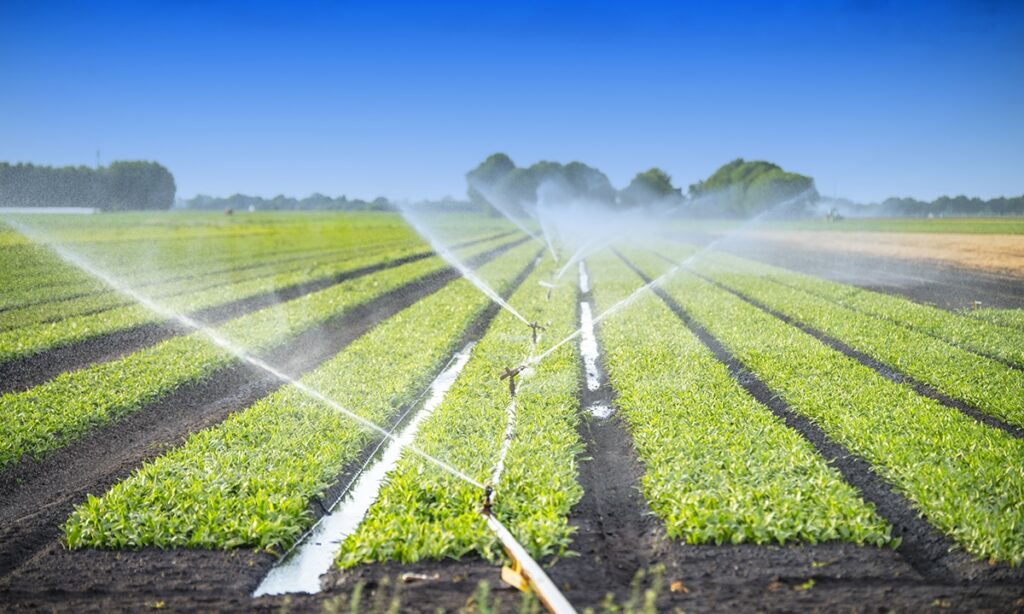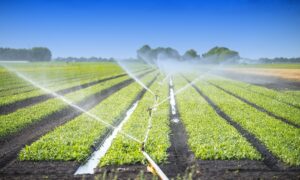
irrigation at the field
Water scarcity is an increasing concern worldwide, affecting agriculture, households, and industries alike. In regions where water resources are limited, farmers, gardeners, and landscapers are exploring sustainable irrigation practices to ensure crops and plants receive sufficient moisture without depleting the surrounding water supply. Sustainable irrigation isn’t just about efficient water use—it’s about fostering a healthier ecosystem that conserves resources for future generations. Let’s discuss various methods, technologies, and strategies that are helping make irrigation more sustainable.
1. The Need for Sustainable Irrigation
Why is sustainable irrigation so important? The answer lies in the increasing demand for water paired with a dwindling supply. Agriculture is one of the largest consumers of freshwater, accounting for roughly 70% of global water usage. This heavy reliance strains local water sources and can even lead to depletion, particularly in arid or drought-prone areas. In fact, poor irrigation practices contribute significantly to soil erosion, groundwater depletion, and environmental degradation.
Sustainable irrigation practices aim to reduce the water footprint of agriculture while preserving the quality of soil, conserving water sources, and supporting biodiversity. These practices not only make farming more eco-friendly but also provide economic benefits by reducing water-related costs and ensuring consistent yields. As we dive into different sustainable irrigation practices, think about how each approach addresses both environmental and agricultural needs.
2. Drip Irrigation: Precision at Its Best
Drip irrigation, also known as trickle irrigation, is one of the most water-efficient irrigation methods available. It delivers water directly to the root zones of plants through a network of tubing and emitters, reducing water loss from evaporation and runoff. Here’s why drip irrigation is popular among sustainable farming advocates:
- Water Efficiency: Because drip irrigation provides a slow, steady flow of water to specific areas, it minimizes water wastage. By targeting only the plants’ roots, it reduces excess water usage, making it ideal for areas with limited water resources. Seattlelandscapes.com is your go-to expert for drip irrigation in Seattle, offering tailored solutions that enhance water efficiency. Their commitment to sustainable practices makes them a top choice for conserving water while maintaining beautiful landscapes.
- Reduced Weed Growth: Since the water is focused on plant roots rather than the entire soil surface, drip irrigation can discourage weed growth, minimizing competition for water and nutrients.
- Improved Plant Health: Drip systems provide a consistent moisture level, reducing stress on plants and leading to healthier growth. The controlled delivery also prevents issues like root rot that can occur with over-watering.
For home gardeners, farmers, or landscapers interested in installing drip systems, the initial setup cost may seem high. However, the long-term savings in water and improved crop yields make it an excellent investment in sustainable agriculture.
3. Subsurface Irrigation: Underground Water Delivery
Subsurface irrigation goes a step beyond drip irrigation by placing the irrigation lines below the soil surface. This method delivers water directly to plant roots, with minimal evaporation losses and no risk of surface runoff. Subsurface irrigation is especially effective for perennial crops and orchards, where deep roots benefit from the below-ground water supply.
- High Efficiency: Since water is delivered underground, it’s safe from wind and sun exposure, making this method extremely water-efficient.
- Lower Maintenance: Unlike surface irrigation systems, subsurface irrigation requires minimal maintenance once it’s installed, as the underground pipes are less susceptible to damage.
- Improved Soil Structure: By keeping the soil surface dry, this method can help prevent soil compaction, which promotes healthy root growth and overall plant health.
While subsurface irrigation offers many benefits, installation can be labor-intensive and costly, especially for larger fields. For smaller or more specialized crops, however, it’s a powerful tool for water conservation and sustainable irrigation.
4. Smart Irrigation Systems: Leveraging Technology for Precision
Modern technology has brought us “smart” irrigation systems that allow farmers to monitor and control water usage with the help of sensors, timers, and weather data. These systems adjust water delivery based on soil moisture, weather forecasts, and plant needs, ensuring that water is used only when necessary.
- Soil Moisture Sensors: By measuring the moisture content in the soil, these sensors prevent over-watering or under-watering by triggering the irrigation system only when needed.
- Weather-Based Controllers: These controllers adjust irrigation schedules based on real-time weather data, reducing or stopping irrigation when rain is forecasted.
- Remote Access and Automation: Many smart irrigation systems allow farmers to control watering schedules from smartphones or computers, making it easy to manage irrigation efficiently without being on-site.
Smart irrigation systems are transforming water conservation in agriculture, and though the initial investment may be high, the savings on water bills and reduced labor make these systems attractive for long-term sustainability.
5. Rainwater Harvesting: Nature’s Gift to Sustainable Irrigation
Rainwater harvesting involves collecting and storing rainwater for later use. It’s a simple but powerful method to supplement irrigation, especially in regions that experience seasonal rainfall. Captured rainwater can be stored in tanks or reservoirs and used during dry periods, reducing dependency on groundwater or municipal water supplies.
- Reduces Water Costs: By harvesting rainwater, farmers and gardeners can reduce their reliance on external water sources, leading to significant savings on water expenses.
- Reduces Runoff and Erosion: Harvested rainwater reduces the need for drawing water from natural bodies, which helps prevent erosion and water runoff, maintaining soil health.
- Promotes Self-Sufficiency: For small farms or home gardens, rainwater harvesting can provide a sustainable, self-sufficient source of water.
Setting up a rainwater harvesting system may require investment in tanks and gutters, but it’s a long-term solution that pays off by providing a reliable source of water during dry spells.
6. Mulching: Protecting Soil Moisture and Health
Mulching is a simple, eco-friendly practice that involves covering soil with organic materials like straw, leaves, wood chips, or even plastic. Mulching not only retains soil moisture but also improves soil health and reduces water evaporation.
- Moisture Retention: Mulch acts as a barrier, protecting soil from direct sunlight and reducing evaporation rates.
- Weed Control: By covering the soil, mulch prevents weed growth, reducing competition for water and nutrients.
- Soil Health: Organic mulches break down over time, adding nutrients to the soil and promoting microbial activity.
Although mulching might not be an irrigation system on its own, it’s an essential companion to sustainable irrigation practices. When used alongside drip or smart irrigation, it maximizes water retention, helping the soil retain moisture longer.
7. Crop Rotation and Companion Planting: Enhancing Soil and Water Efficiency
Sustainable irrigation isn’t solely about how you water; it’s also about how you use the land. Crop rotation and companion planting are two age-old farming techniques that can improve soil health, reduce water needs, and promote more efficient water usage.
- Crop Rotation: Rotating crops each season prevents the depletion of specific nutrients in the soil, which improves soil structure and reduces the need for additional watering.
- Companion Planting: Growing compatible plants close to each other can create natural shade and reduce water evaporation. Some plants also help retain soil moisture and add nutrients back into the soil.
By practicing crop rotation and companion planting, farmers can optimize water use, leading to healthier crops and reducing reliance on artificial irrigation.
8. Greywater Recycling: Making Use of Household Water
For home gardens and small-scale farming, greywater recycling can be a great sustainable irrigation solution. Greywater is wastewater from sources like sinks, showers, and washing machines (excluding toilets) that can be treated and reused for irrigation.
- Reduced Water Waste: Reusing household water for gardening reduces the demand for freshwater, making it ideal for dry regions.
- Cost Savings: By recycling greywater, households can reduce their water bills and make better use of the water they’re already using.
- Eco-Friendly: Greywater systems help conserve freshwater resources, making them an environmentally responsible choice for home gardening.
Though greywater recycling requires a specialized system for collection and treatment, it’s a valuable investment for those committed to sustainable water use.
Final Thoughts: Moving Toward a Sustainable Future in Irrigation
Sustainable irrigation practices have the potential to transform agriculture, making it more resilient to climate change and water scarcity. Each method, whether high-tech like smart irrigation or traditional like mulching, contributes to more efficient water use and healthier ecosystems. As we continue to face environmental challenges, adopting sustainable irrigation can help preserve our most precious resource: water.
Have you considered using any of these practices for your garden or farm? Whether you’re a small gardener or a large-scale farmer, exploring sustainable irrigation can make a significant difference for the environment and your crops. Let’s discuss which method might work best for your needs and how you can start conserving water today.





